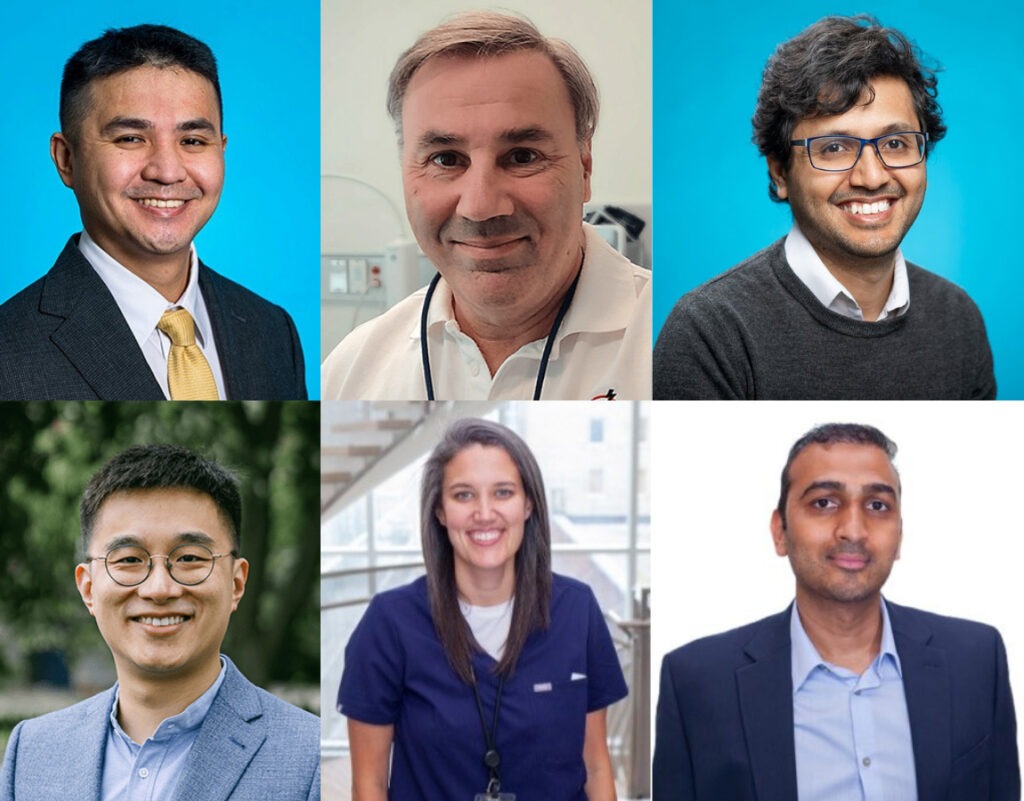St. Michael’s neurologists speak with non-English radio stations to spread stroke awareness

Over the past year, neurologists from St. Michael’s Hospital and the Southeast Toronto Stroke Network (SETSN) have been speaking with local non-English radio stations to promote stroke awareness and prevention. This radio campaign is part of the Stroke Program’s focus on providing equitable stroke care and education to the diverse Toronto region.
These radio interviews—conducted so far in six different languages—are an effort to address the disparity of accessible stroke information across Ontario. Studies show that there are over 100,000 stroke cases in Canada each year, yet 3 in 10 Canadians do not recognize the signs and symptoms of stroke. Stroke is a time-sensitive medical emergency. Recognizing the signs and seeking treatment as quickly as possible can lead to better outcomes.
Listen to the Stroke Q&A’s on local non-English radio stations
Considering Ontario’s large immigrant population, language barriers are an obstacle that the Stroke Program has started to address to increase awareness and education as part of their dedication to health equity in stroke care, said Michelle Mohan, SETSN program coordinator.
The Stroke Program has taken advantage of the fact that many of the neurologists from St. Michael’s speak different languages. So far, the radio interviews include: Tagalog with Dr. Danni Diestro, Spanish with Dr. Gustavo Saposnik, Hindi with Dr. Manav Vyas, Mandarin with Dr. Jeffrey Wang, French with Dr. Alexandra Muccilli, and most recently, Urdu with Dr. Atif Zafar.
Enjoying this story? Sign up for the Unity Health Toronto newsletter, a monthly update on the latest news, stories, patient voices and research emailed directly to subscribers.
The radio interviews typically hone in on three key messages: recognizing the signs and symptoms of stroke, the importance of calling 911 right away, and ways to adopt a healthy lifestyle, said Mohan. These messages stem from the fact that many communities do not have access to this information because health awareness campaigns tend to only be in English or French.
“We do our best to translate resources into different languages, but with so many languages spoken in our communities, it’s a challenge to reach everyone. Partnering with non-English radio stations has been a great way to share important information with groups who may not be able to connect with some of the larger mainstream campaigns,” she said. “It’s been great partnering with the non-English radio stations. They have been incredibly welcoming and supportive.”
The interviews strive to provide not just basic awareness, but also to address common questions from each respective cultural-linguistic community, said Dr. Atif Zafar, medical director of the Comprehensive Stroke program at St. Michael’s. For example, many community members want to understand why it is important to go to the emergency room for symptoms that seem rather subtle or mild, he said.
“It’s a very reasonable question and it shows how our communities realize that the health system is overwhelmed in a way, and they don’t want to come in,” he said. “Those types of questions were coming in to these radio stations, and we were able to spread a message that there are certain symptoms which you cannot take lightly.
“The idea of these radio interviews is to re-emphasize the fact that a flu, an itch, the small lesion in the skin, those are different than a facial droop or an arm weakness on one side or speech changes. Those are the things where you should come into the hospital right away so that we can intervene.”
The Stroke Program is working to cultivate holistic stroke care. Sharing stories and engaging in conversations with local communities continues to be a fundamental value for the team, Zafar added.
“We try to do cutting edge stuff with AI technology and complex imaging, and a lot of times doing these type of radio interviews brings in some element of humility,” he said. “So on one hand, we’re diagnosing these complex patients that have never been diagnosed before and are having stroke recurrence and different things. But at the same time, the education or the need in the community is to recognize the basic signs of stroke.”
By: Lois Lee
